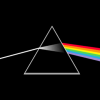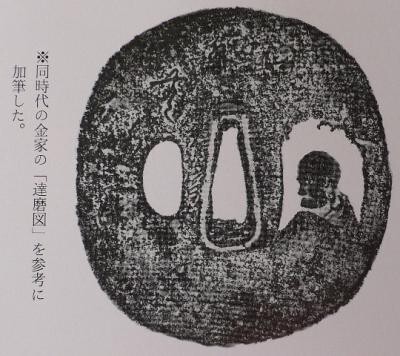-
Posts
1,813 -
Joined
-
Last visited
-
Days Won
8
Content Type
Profiles
Forums
Events
Store
Downloads
Gallery
Everything posted by Henry Wilson
-
I would say the tsuba is Heianjo. For more info have a look here: http://www.yamabushiantiques.com/RH%20TSUBA%205.htm This is a good example of a Yoshiro tsuba (in my opinion). Notice the difference between yours and this. http://www.yamabushiantiques.com/RH%20TSUBA%205.htm Cheers
-

Your opinion? (Sakura Tsuba)
Henry Wilson replied to Drago's topic in Auctions and Online Sales or Sellers
Kinko refers to soft metal tsuba which is any metal except iron. The tsuba in question looks iron, (possibly Toda school) so not kinko. -

Where can I get a good sword rack?
Henry Wilson replied to TTyMiller's topic in General Nihonto Related Discussion
Here is his contact details: Brock Lusk bmlusk1911@gmail.com Good luck -

Where can I get a good sword rack?
Henry Wilson replied to TTyMiller's topic in General Nihonto Related Discussion
I am sure Brock Lusk on the NMB could make you one at a good price. He made a nice kabuto stand for me a while back. -
Hi David Do you not think the image more representive of Bodhidharma? http://en.wikipedia.org/wiki/Bodhidharma
-
I think these are useful reference peices. The first being the Kaneie David mentions and the second a rubbing of a Nobuie tsuba. The Dharuma design was more than made classic by Kaneie, if my memory serves me correct, it was first done by him.
-
Thanks all for your thiughts. Here are some gleanings from the net: In Chinese macrocosmic symbology, the circle expresses the shape of heaven, with earth signified by a square. When we see a square inside a circle in Chinese art, it represents the union between heaven and earth. Maṇḍala is a Sanskrit word. In the Buddhist and Hindu religious traditions their sacred art often takes a mandala form. The basic form of most Hindu and Buddhist mandalas is a square with four gates containing a circle with a center point. Each gate is in the shape of a T. Stupas are spiritual monuments that represent the enlightened mind of Buddha. These Buddhist symbols represent the five elements. The square base represents the earth, the round dome is for water, the cone-shape is fire, the canopy is the air, and the volume of the entire stupa represents space.
-
I wonder if anyone can tell me what the square shaped engraving on these tsuba represent? http://www.nihonto.com/11.5.11.html http://www.yamabushiantiques.com/TSUBA64.htm Thanks for your thoughts.
-
The lower one used to belong to me (I think)
-
This interesting thread has turned into a real bore....... :? as I think we could be thinking about this too much. The alternatives seem to be: 1. The original tsuba posted by David was made by 1st (or 2nd) generation Yamakichibei 2. It was made by a workshop connected to the 1st (or 2nd) Yamakichibei 3. It was made by a group not connected to Yamakichibei who forged the signature of what looks like the 1st Yamakichibei. It could have also been made 20 years ago by a man called Duke when he was living in Lapland I suppose. (No offense intended to anyone) My point is who cares. At the end of the day it is what it is. Dare I say, why not look upon it as Zen art and try not to over analyse it? Finally, many Thanks to Steve for taking the time to post great threads (as usual) with lovely pics as well.
-
Hi Steve yes, sorry "all" is a bit over the top. It was a slip of the finger / brain. Thank you for pointing that out.
-
Hi David Bad luck!! That tsuba belonged to me once. I am not surprised it did not paper. (Would I have sold it if I had thought it would!!). Here are my thoughts. First of, I don't think it is gimei. Also it is a nice tsuba (much better than the scans) but definitely not what would be expected from a Yamakichibei master. If you ask me there are two kinds of tsuba. They are 工場作 and 自信作. I think the tsuba could be a real Yamakichibei but not a 自信作. In my opinion, with the Owari smiths who signed, Nobuie, Yamachibei etc there are lots of tsuba that are not gimei but not made by the hand of the master and possibly made in a workshop managed by the master. I have been hearing this thoery a lot recently from Japanese collectors and think it has some validity, especially with the tsuba posted, as it has all the characteristics of 1st generation Yamakichibei but lacks that certain special quality. As a hint, a true masterpeice stands out. You can tell it is special from a distance before you even pick it up. I hope this helps.
-
The catfish apparently lies with its tail under the provinces of Shimosa (modern Chiba) and Hadachi (modern day Ibaraki) and when angry wiggles and causes earthquakes. It is believed Kaname Ishi (pivot stone that holds the world together) rests on its back. He is a modern representation of him More info on the tsuka itself. http://www.yamabushiantiques.com/TSUKA4.htm
-
I think the tobacco clasp represents Hotei's sack: Check out wiki: http://en.wikipedia.org/wiki/Budai
-
One of the KTK catalogs has an article about such inlays and the purpose of them. I think it is the 2010 edition and the article was written by Saulius V. Ploplys.
-
They are blossoms on sea waves. One blossom looks like it is being consumed by the waves and the others appear to be getting tossed around. I think it represents the battle at Dan no Ura 壇ノ浦の戦, the defeat of the Taira by the Minamoto and the start of the Shogunate system. http://en.wikipedia.org/wiki/Battle_of_Dan-no-ura Happy Holidays!!
-
Just one last post from me. To everyone, I am sorry that this thread has turned out the way that it has as it was not my intention. I feel quite embarrassed with myself and hope you all will accept my apologizes.
-
Hi Ford I can't be bothered.
-
I didn't know you were so easily offend Ford. Sorry for pushing a button. The above is an assumption you have made yourself. I have every faith in you and your metal work abilities. Also I apologise for the smilies that have upset you and also I apologise for me daring to go against your way of thinking from my armchair. I am sure that what you say is accurate, my point is that you have a very good reputation in your field and putting such information on a open forum were any Tom Dick and Mary can read it and apply as they understand it could result in a lot of damage being done. I respectfully dare to say that from what you wrote I have understood (being a layman) that a blowtorch and paint stripper will set any tsuba right. Maybe that is not what you have exactly said but that is what I have digested. As a way of explaining myself, I agree with what Richard says here. I didn't know smilies could be offensive.... which is why I used them..... To try an stop a bar brawl. Anyway, I am out off here and will leave you all to it
-
This is a joke right? The above sounds like dangerous (but well intended ) advice.
-
Despite my best intentions I could not be bothered to go to the DTI this year :D . I had a cold on the Saturday so went kitchen shopping with the wife. I would not mind a copy of the catalog if there is one kicking around. The Friday and Sunday I was working. Mainly I was saving myself for the a day at the National museum in Tokyo. I will go next year and see everyone who probably missed me this year . That's my report on the DTI.
-
Marcello The tsuba is up-side-down. It looks like a Meiji period shiiremon to me. It seems to be in the style of some Goto work. Is it made of iron?




